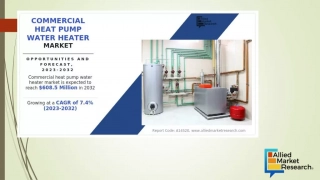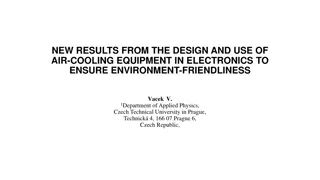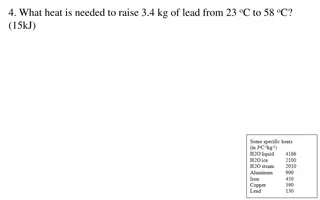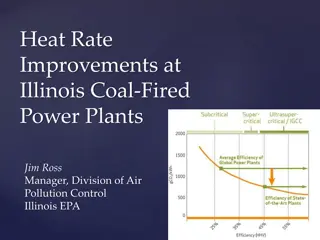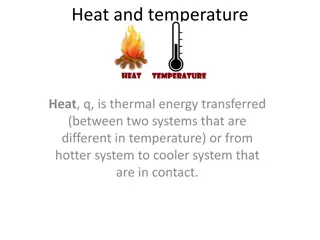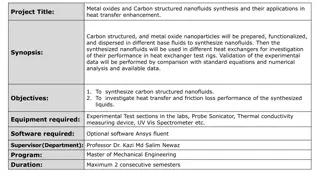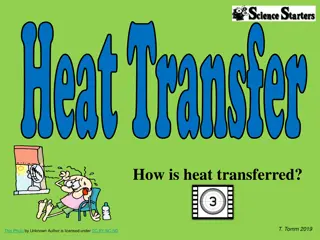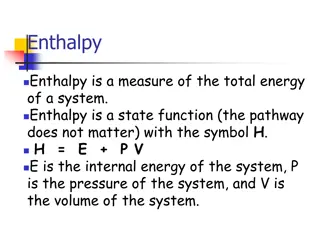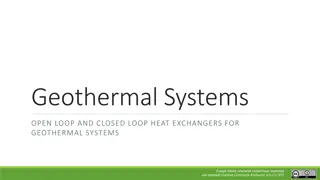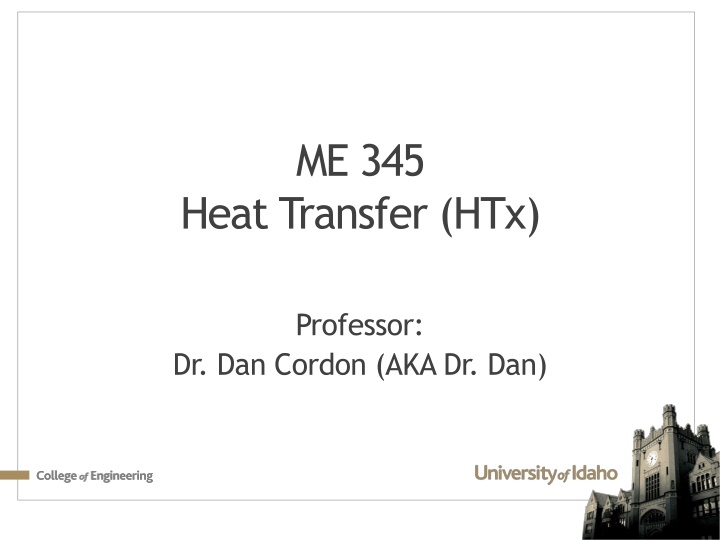
Heat Transfer and Exchangers in Engineering
Delve into the world of heat transfer and heat exchangers with a focus on parallel and counterflow configurations. Learn about the rate of heat transfer, overall heat transfer coefficient, Log-Mean Temperature Difference (LMTD), and more to enhance your engineering knowledge.
Download Presentation

Please find below an Image/Link to download the presentation.
The content on the website is provided AS IS for your information and personal use only. It may not be sold, licensed, or shared on other websites without obtaining consent from the author. If you encounter any issues during the download, it is possible that the publisher has removed the file from their server.
You are allowed to download the files provided on this website for personal or commercial use, subject to the condition that they are used lawfully. All files are the property of their respective owners.
The content on the website is provided AS IS for your information and personal use only. It may not be sold, licensed, or shared on other websites without obtaining consent from the author.
E N D
Presentation Transcript
ME 345 Heat Transfer (HTx) Professor: Dr. Dan Cordon (AKA Dr. Dan)
CONCENTRIC TUBE HEAT EXCHANGERS Parallel Flow (wrong) Counterflow
RATE of HEAT TRANSFER The rate of heat transfer associated with either stream in a heat exchanger in which incompressible fluid or ideal gas with constant specific heats flows is Rate of heat transfer from the hot fluid Rate of heat transfer to the cold fluid We would like to get to a point where we can describe the rate of heat as: U is the overall heat transfer coefficient (in place of individual convection coefficients) A is the total surface area where heat transfer is taking place T needs to appropriately capture the average temperature difference between the two fluids as they flow through the heat exchanger
PARALLEL FLOW The direction of both hot and cold fluids are the same. Giant temperature difference at the inlet. Small temperature difference at the outlet. The left side is 1 The right side is 2 ?1= ? ,? ??,? ?2= ? ,? ??,? Or, in general for a parallel-flow heat exchanger:
COUNTER FLOW The direction of both hot and cold fluids are the opposite. Temperature difference at the inlet and outlet will likely be similar in magnitude. The left side is 1 The right side is 2 ?1= ? ,? ??,? ?2= ? ,? ??,? Or, in general for a parallel-flow heat exchanger:
LMTD COMPARISON Do it! Let Th, i = 400K. Th, o = 300 K. Tc, i = 200 K. Tc, o = 250 K Calculate the Log-Mean Temperature Difference for each heat exchanger configuration. LMTDparallel = 108.2 K LMTDcounter = 123.3 K
HEAT EXCHANGER EFFECTIVENESS Important Distinction!! C is NOT the same as c EES is not case sensitive, so you ll need to be careful/purposeful about your variable names
EXAMPLE 11.1 Choosing to look up water properties at 35 C was no coincidence. In reality, you might start this problem looking up water properties at 30 C, then solving for Tc,o and then looking up properties again at the average temperature.
EXAMPLE 11.1 We weren t provided U, but we can calculate it if we find h for the internal flow and h for the outer flow. First calculate the Reynolds Number for the inner flow, then choose appropriate correlations for Nusselt Number (if laminar or turbulent) to calculate the convection coefficient.
EXAMPLE 11.1 Now calculate the Reynolds Number for the outer flow, then choose appropriate correlations for Nusselt Number (if laminar or turbulent) to calculate the convection coefficient.
EXAMPLE 11.1 Our chart for U says a concentric tube heat exchanger between oil and water should be U = 110-350 W/m2K. But in this case with the oil flow being laminar (and with a very low convection coefficient) the overall heat transfer coefficient is *much* lower.
EXAMPLE 11.1 Let s calculate the heat exchanger effectiveness for this problem as well. or But since we already know the heat transfer rate we can also use the equation: Running some equations in EES

